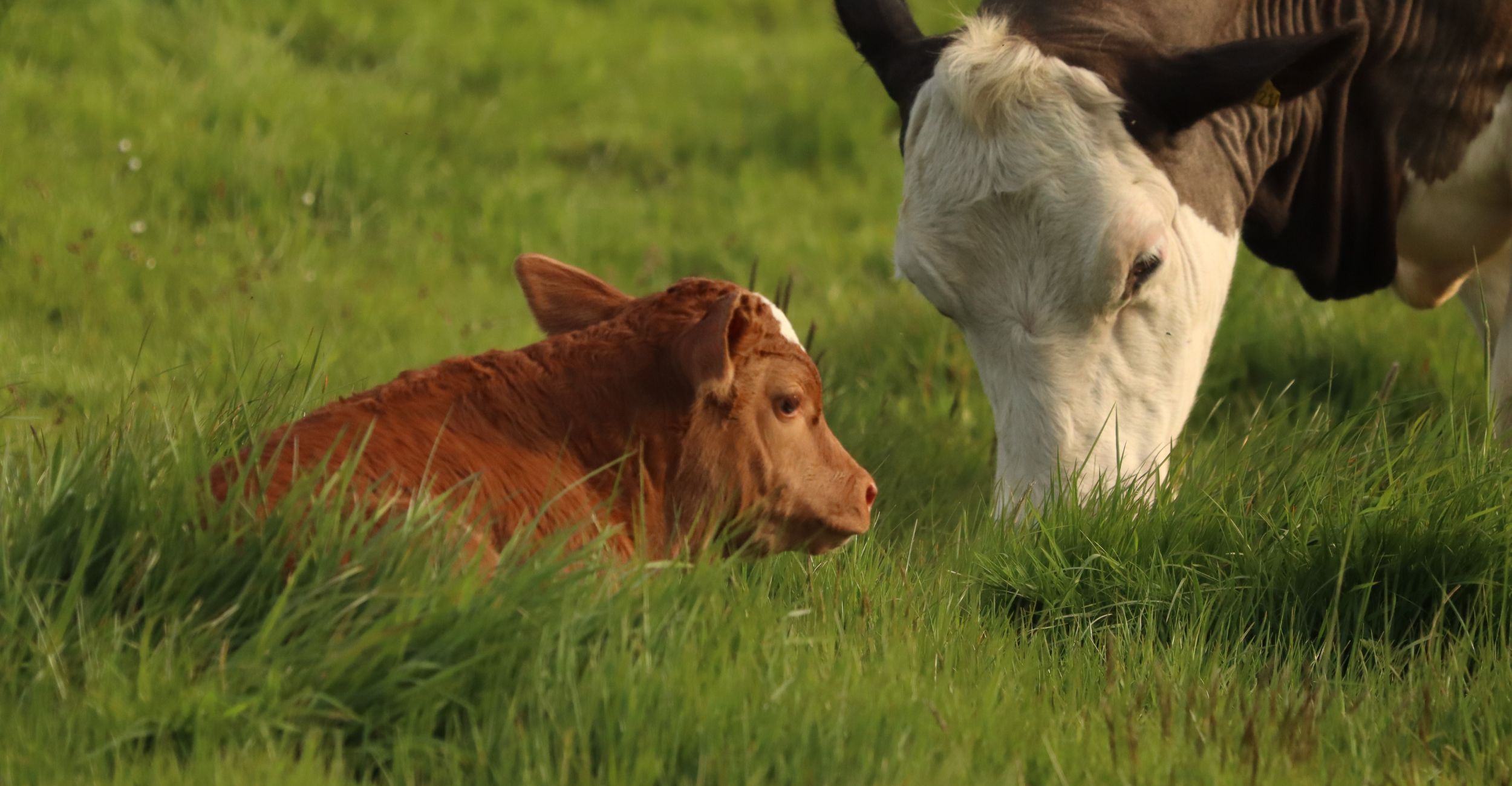
Veterinary Viewpoints: Tips for weaning beef calves
Friday, August 16, 2024
Media Contact: Kinsey Reed | Communications Specialist | 405-744-6740 | kinsey.reed@okstate.edu
Weaning marks a pivotal moment in the life of a beef calf, but it's also one of the most stressful.
At 6 to 8 months, beef calves undergo a series of stressors including separation from their dam, castration, vaccination, dehorning, exposure to new environments, changes in feed and water sources, and weather fluctuations — particularly for spring-born calves. These stressors, either individually or combined, can significantly challenge the calf's health, growth and performance. As a cattle producer, your management strategies during this critical period can make all the difference in the short-term and long-term success of your operation.
Here are some essential tips for navigating the weaning process (before, during and after) effectively:
Pre-weaning management plays a crucial role in preparing calves for the challenges of weaning. Ensuring optimal nutrition is key, as it directly impacts the calf's ability to mount an immune response to vaccinations and cope with the stress of weaning. A balanced diet rich in protein, energy, minerals and vitamins sets the stage for healthier, more resilient calves. Vaccination is a critical component of pre-weaning management. Administering vaccines two to three weeks before weaning allows calves to develop immunity before facing the stress of separation from their dams.
To minimize stress during weaning, it is also advisable to perform procedures such as castration, dehorning and branding before the actual weaning process begins. This approach reduces the cumulative stress experienced by the calf and promotes a smoother transition.
There are three main weaning strategies to consider, each with its advantages and disadvantages:
- Total separation: This approach involves abruptly separating cow and calf without physical contact. While this method offers the option to sell calves directly off the cow, it can be highly stressful due to the sudden change in environment, diet and social structure. Calves may experience increased vocalization, reduced feed intake and weight loss initially. Additionally, the risk of respiratory and digestive diseases may be heightened during this period of adjustment.
- Two-stage weaning: This strategy includes the placement of an anti-suckling plastic nose paddle to prevent nursing while the calf remains with its dam. This approach gradually accustoms the calf to reduced milk intake and encourages the consumption of solid feed. After wearing the nose paddle for a predetermined period (typically 4 to 14 days), the calf is physically separated from the cow. While this method reduces behavioral signs of stress, its impact on long-term calf performance remains variable across studies. Placement and removal of nose paddles add to labor costs and handling stress for calves.
- Fenceline weaning: This strategy involves placing cows and calves in adjacent pastures (separated by a single fence) or pens for a period of at least 3 to 4 days, although a longer duration (up to 14 days) may be beneficial. This keeps cows and calves in closer proximity so they can see, hear and smell each other. This strategy necessitates sturdy fencing to prevent escape or rejoining of cow and calf and ideally shade along both sides of the fence. Fenceline weaning minimizes the shock of separation by providing continuous social interaction and access to familiar forage. With this weaning strategy, calves are more likely to maintain feed intake (and gain weight quicker after weaning) and exhibit fewer signs of stress compared to other weaning methods. Additionally, this approach facilitates an easier transition to post-weaning diets and farm management practices.
Careful grazing management is essential during and after weaning to accommodate both cows and calves. For calves, overall nutritional management plays a vital role in mitigating the impact of stress during and after the weaning process. By selecting feeds with high palatability and digestibility and carefully managing the introduction of energy-dense grains, producers can ensure that transitioning calves receive the nutrients they need to thrive.
Providing unrestricted access to clean water is also paramount for the health and well-being of recently weaned calves.
When choosing a weaning strategy, consider the specific needs and dynamics of your operation. Consult with your veterinarian to determine the best approach based on factors such as herd size, facilities, and available resources.
About the author: Dr. Melanie Boileau is a professor of Food Animal Medicine and Surgery, Veterinary Clincial Sciences at Oklahoma State University's College of Veterinary Medicine.
Veterinary Viewpoints is provided by the faculty of the OSU Veterinary Medical Teaching Hospital. Certified by the American Animal Hospital Association, the hospital is open to the public providing routine and specialized care for all species, as well as emergency care. Call 405-744-7000 for an appointment or see more information at vetmed.okstate.edu.
